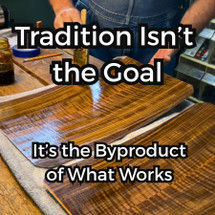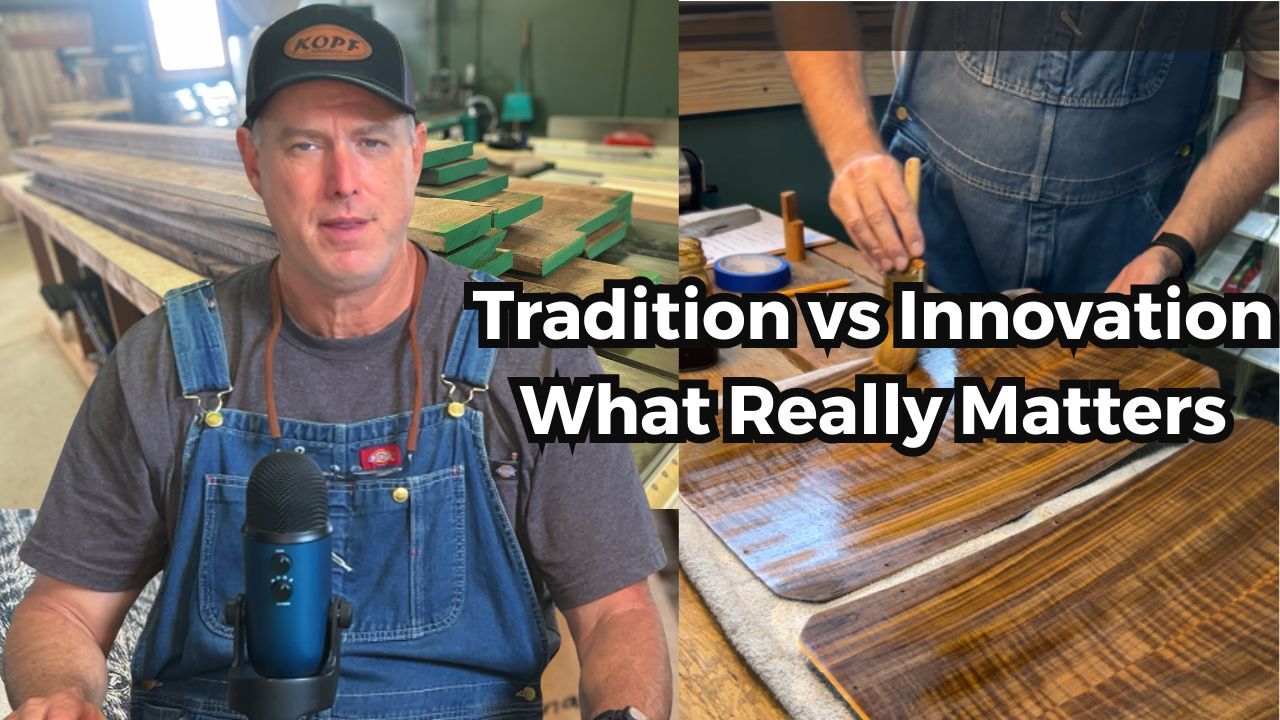Posted by Stephen Head on 7th Oct 2025
Tradition Isn’t the Goal — It’s the Byproduct of What Works
Tradition Isn’t the Goal — It’s the Byproduct of What Works
When people see me using shellac, hand-fit joinery, or old tools in the shop, they often assume I’m stuck looking backward — like I’m trying to recapture something nostalgic or romantic. But that’s not the story. For me, tradition isn’t the objective. It’s a natural outcome when a method proves itself over time.
I’ve got deep respect for craftsmanship that’s been vetted over centuries. But I don’t follow traditional methods blindly. My guiding principle is simple: Does it serve the instrument? If it does, I use it — whether it’s a technique that’s 200 years old or something I discovered last week.
Why Shellac, Why Now?
Shellac is a great example of a traditional material making sense in the modern workshop. It has a long history as a wood finish — a natural resin exuded by lac bugs and processed into flakes that dissolve in alcohol.
Why do I choose shellac (or shellac-based methods) on my cajons?
-
Fast drying — It allows me to build in control and layering without long waits.
-
Sealing power — It seals wood grains well, helping maintain stability and consistency in tone.
-
Repairability — New shellac blends into old shellac, so touchups are seamless.
-
Transparency & clarity — It allows the beauty of the wood to show through without heavy film coatings.
Yes, shellac is “traditional.” But I don’t use it for the sake of tradition. I use it because, in the context of handcrafted percussion, it simply works.
In fine woodworking and luthiery circles, shellac (especially used in French polish technique) remains prized for its tonal subtlety and aesthetic lightness. Even though modern synthetic finishes and waterborne polyurethanes are more durable in harsh conditions, many instrument makers still favor shellac or hybrid systems because of how it sounds and how it interacts with wood over time.
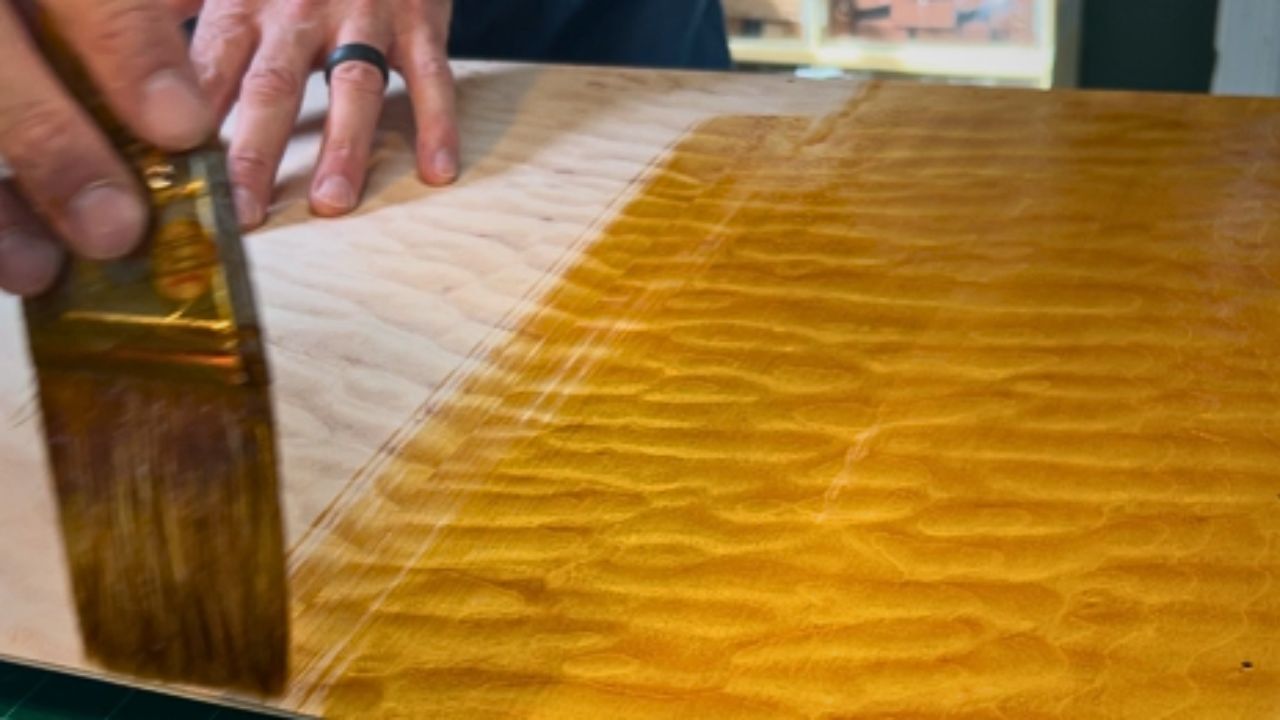
Traditional Joinery: Why the Old Ways Still Matter
Joinery is another place where tradition and practicality intersect. Traditional joinery (mortise & tenon, dovetail, lap joints, finger joints) is about thoughtfully structuring wood so that parts fit and move as intended.
Why hand-fit joinery in instrument building?
-
Precision of grain direction — By using these time tested joinery techniques, I know how fiber orientation, seasonal movement, and wood behavior will influence stability.
-
Durability — A properly made box joint resists shifting, cracking, or separation over decades.
-
Aesthetic integrity — The visible lines, tight fits, and absence of excess glue or mechanical fasteners reflect a confidence in the work.
In Japanese tradition—kigumi joinery, for example—craftsmen assemble complex structures without nails or metal, relying entirely on joints and wooden pegs. That doesn’t mean I copy those methods exactly, but I’m inspired by the mindset behind them: structural elegance, respect for the material, and letting the wood do the work.
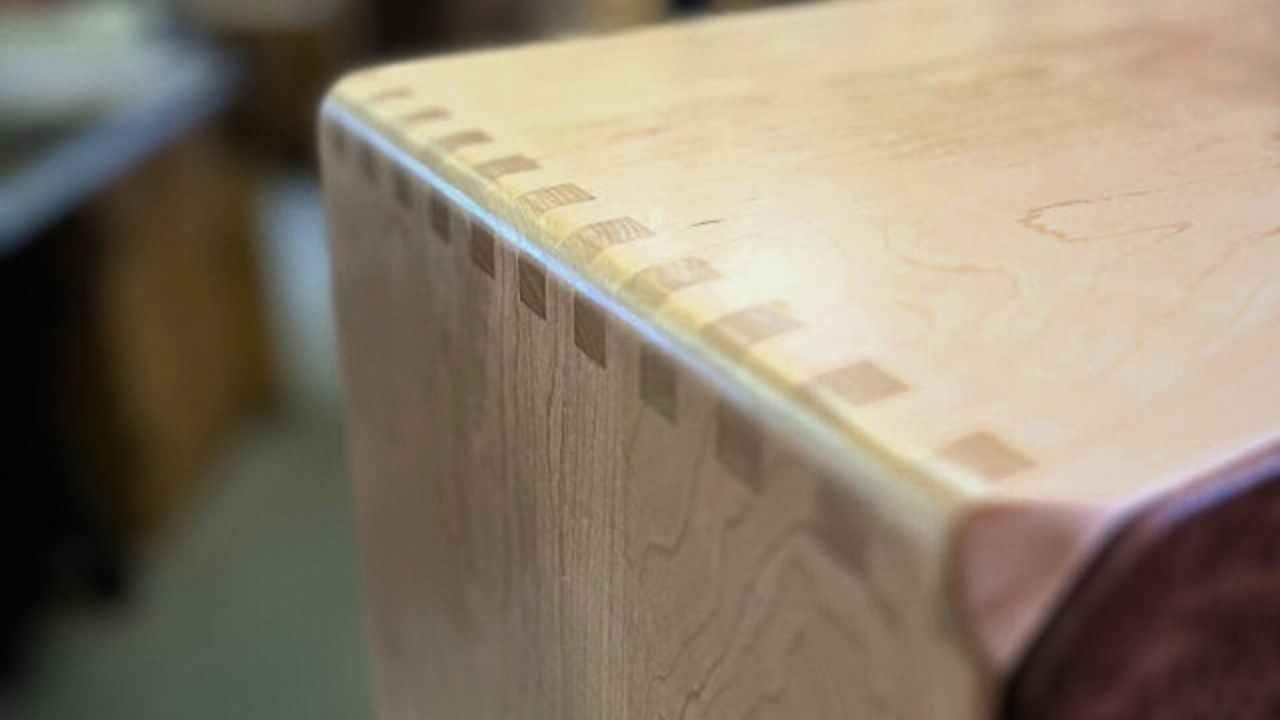
Tradition as Evidence, Not Obligation
When I make a decision in the shop — whether to choose a particular wood, a joinery style, or a finish — my filter is not “Is this traditional?” but “Does this serve the drum?” If the method holds up over time, if it yields consistency in tone, if it gives me control — then yes, it earns its place. If not, I let it go.
That’s how tradition becomes a byproduct, not a shackle.
Traditional craftsmanship was born of necessity, experimentation, and refinement. Builders didn’t try methods because they were old; they tested them until only the strongest ideas survived. The fact that something is “traditional” means it’s been battle-tested. That matters to me.
In Practice: How This Philosophy Plays Out in My Percussion Work
-
Wood selection — I pick tonewoods with an understanding of density, moisture behavior, and acoustic responsiveness. Nothing is arbitrary.
-
Joint decisions — I choose which joints to use based on structural demands of each part of the cajon, not just because “that’s how it’s always done.”
-
Finish layering — I’ll often use shellac as a base, sometimes sealed with something else later, depending on environmental needs — but never in a way that compromises tone.
-
Continuous refinement — I test, I adjust, I listen. A technique may be traditional, but I’m always open to small innovations or tweaks that improve performance.
So when you see a clean, hand-fit joint or a shellac finish on one of my cajons — know that it's there because I trust it. Not because I’m trying to recapture the past, but because I believe in the result.
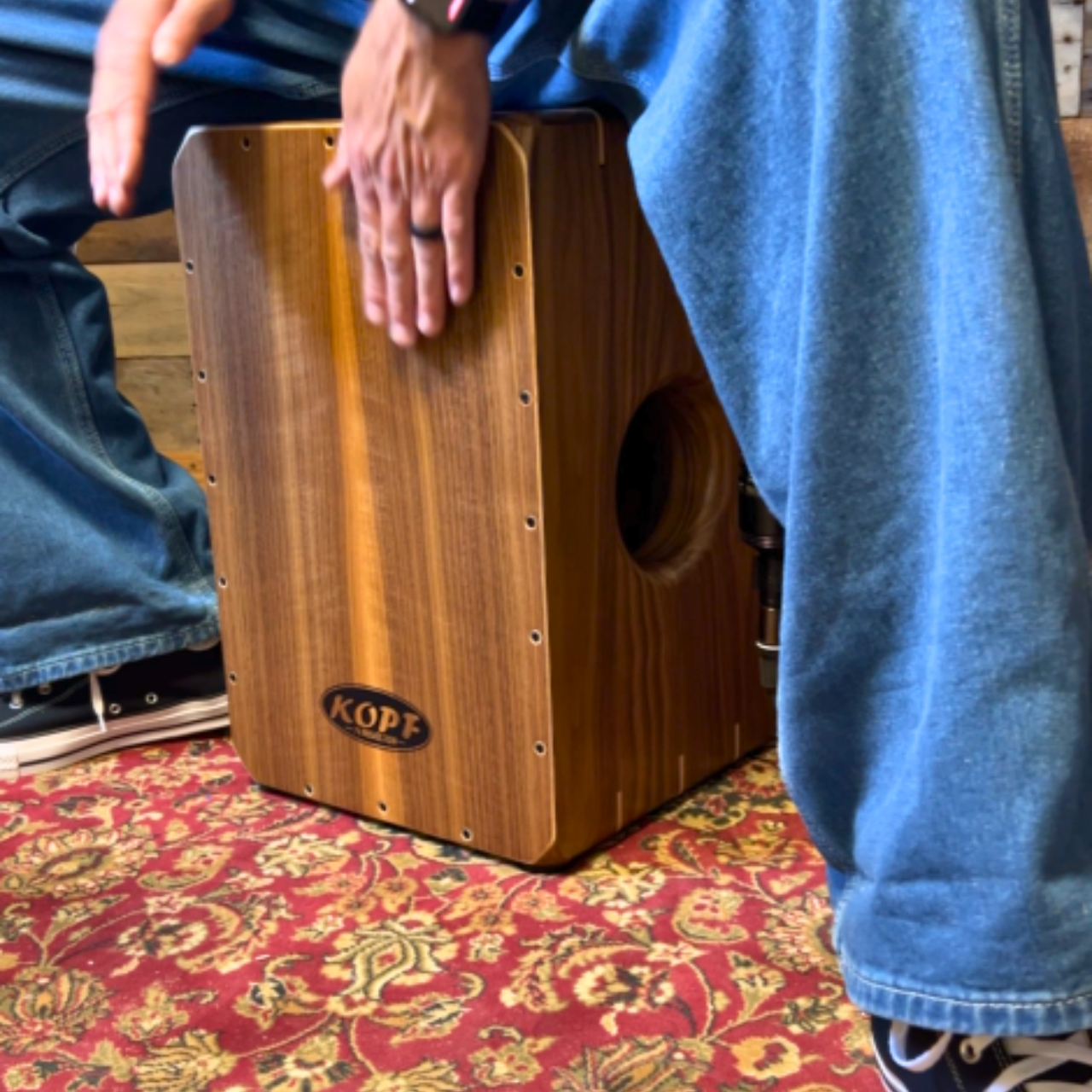
Why This Matters to You (the Player)
When you pick up one of my handcrafted cajons:
-
You’re holding an instrument where every decision has been filtered through tone, consistency, and longevity.
-
The wood breathes, resonates, and ages.
-
The joinery provides a structural foundation that holds over time, resisting warping or separation under changing conditions.
-
The instrument feels alive, not manufactured.
Because in the end, I care about tradition — but I care more about the instrument. That’s what guides every decision I make in this shop. If this resonates with you, I invite you to discover my American Tonewood Series.

